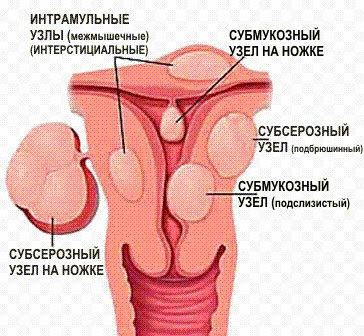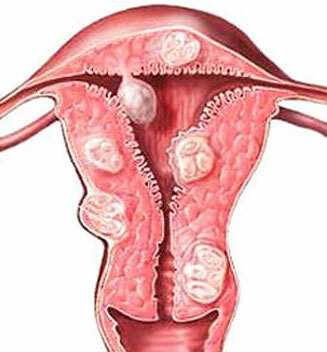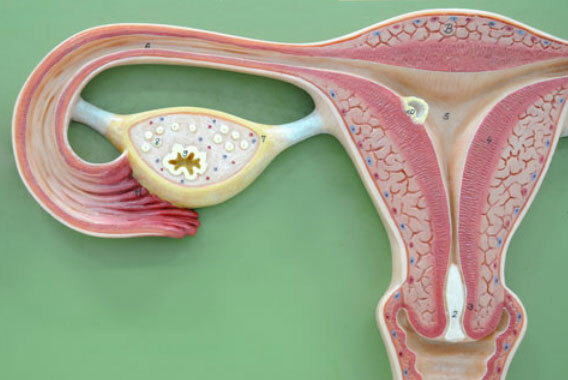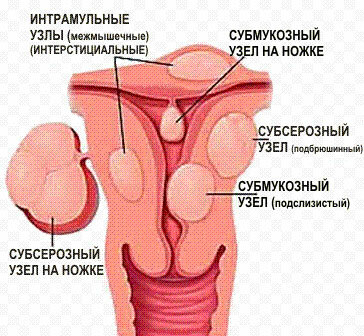Planning pregnancy in the presence of a disease of uterine myoma, often depends on a variety of factors:
- location( localization) of the myomatous node;
- tendency to rapid growth of uterine fibroids;
- the sizes of units of a myoma.
There is an opinion of scientists that the probability of producing offspring is much higher after the removal of uterine fibroids.
Myoma of the uterus during pregnancy can behave unpredictably: it then increases in size( almost 100%), then decreases( approximately, by 30%).
Obviously, the decrease or growth of fibroids is due to the genetic predisposition of a woman.
Pregnancy after removal of uterine fibroids is quite possible.
A prerequisite for this is the presence of a healthy site in the body of the uterus, to which a fertilized egg could safely attach.
If the myomatous nodes are located on the front wall of the uterus, the pain may be localized or radiated to the lower abdomen.
If the myomatous nodes are located on the back of the uterus, the pain may be obscure in the lower back or in the sacrum.
A special difficulty in examining the posterior wall of the uterus is the impossibility( inaccessibility) of carrying out its full palpation.
Multiple uterine myoma and pregnancy
Multiple uterine fibroids are a difficult problem in planning pregnancy.
Removal of several myoma nodes can make pregnancy almost impossible, since there will be no healthy uterine tissue at all.
In this case, doctors recommend removing only those sites in which pregnancy is really impossible.
After the birth of a woman, in whose uterus are still myomatous nodes, they can completely remove them during the cesarean section.
It is not advisable to remove all myomatous nodes before pregnancy, as this will adversely affect the course of pregnancy and subsequent delivery.
The effect of uterine fibroids on pregnancy, in most cases, affects negatively and may be accompanied by abortion and fetoplacental insufficiency( premature separation of the placenta accompanied by bleeding).
Pregnancy with submucous uterine myoma is often accompanied by miscarriage of the fetus or it is generally absent( complete infertility).
Submucous myoma grows inside the uterine cavity and prevents the fetal egg from gaining a foothold on the uterine wall.
Pregnancy with such a myome can be accompanied by frequent abundant uterine bleeding, requiring removal of the uterus.
With a large submucous( submucous) myoma, when it reaches a size larger than a 12-week pregnancy, the gynecologist is likely to raise the issue of its removal.
By itself, myoma is not a contraindication for pregnancy, but if you get rid of it in time, the woman's chances to successfully conceive and bring a healthy offspring are significantly increased.
Submucous uterine myoma can become the main cause of infertility, preventing the movement of the fetal egg and sperm.
Pregnancy in a subserous uterine myoma is characterized by the threat of miscarriage and pains in the lower abdomen.
Usually, this myoma is not a direct contraindication for pregnancy, as it is located on the outside of the uterine cavity.
An exception may be an excessively large myoma or tumor on a thin leg, predisposed to torsion.
The level of danger of sub-serous fibroid may only be detected by a specialist specialist after a thorough examination.
Usually, gynecologists recommend removal of fibroids before pregnancy, as the tumor will grow.
Pregnancy with interstitial( intramural) uterine myoma can become impossible, because the nodes of myoma located in the uterine tissues themselves are able to squeeze the uterine tube so that spermatozoa can not penetrate it and fertilize the egg.
In the early stages of pregnancy, miscarriage may occur, and at later stages premature birth may occur.
Premature rejection of the placenta is also possible, accompanied by severe bleeding.
Bleeding may also occur during childbirth.
According to medical studies, the occurrence of adhesions after laparoscopy may occur if the nodes of myoma are located on the back of the uterus.
A large subserous node is able to squeeze organs located in the small pelvis.
For example, the localization of the tumor on the front wall of the uterus strongly compresses the bladder, which causes discomfort in the lower abdomen and frequent urge to urinate.
A large node located on the back of the uterus interferes with the normal functioning of the intestine.
And if a large myomatous node is located in the area of vascular bundles, it can lead to blood stasis and circulatory disorders in the pelvic organs, as well as to the occurrence of chronic pelvic pain.
Take care of yourself.
Be Healthy!
Video: Uterine fibroids and pregnancy
 Women of reproductive age are often interested in the question of a possible pregnancy with a disease of uterine myoma or after surgery to remove it.
Women of reproductive age are often interested in the question of a possible pregnancy with a disease of uterine myoma or after surgery to remove it.



